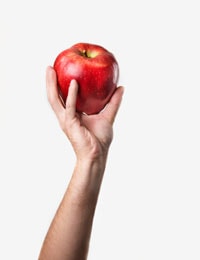
Senior nutritionist Rose Carr shares her practical guide to getting the most from your daily snacks.
Snacking is not something you should do out of boredom or habit. And even though the break you take to prepare or get your snack can be a stress reliever, it’s important to ask yourself from time to time: do I really need the extra kilojoules/calories? If that’s why you’re snacking, it could be an idea to think about other ways to address those issues.
Snacking should be about making sure you don’t get too hungry before your next meal, or ensuring you’re getting enough energy or the right nutrients in your diet.
Not everyone snacks. Some people don’t need to snack; they are able to have meals that will keep them going until their next meal and meet all their energy and nutrient needs.
Other people find it difficult to consume the energy they require to keep them going without snacking. This may be because they’re very physically active and their energy needs are very high; in the case of younger children, their stomachs are small in relation to their energy needs for growth; and for various reasons some people may have difficulty digesting a sufficient volume of food at mealtimes.
Others may just not be organised enough to have an adequate lunch. Whatever the reason, snacks fill the gaps!
Smarter snacking
Go for nutrient-rich snacks and avoid energy-dense, nutrient-poor snacks. This means even if you need lots of extra energy, try to go for snacks full of nutrients as well.
Loading up on snacks high in saturated fat may give you the energy you need but it won’t be good for your long-term health. Choose snacks that contain carbohydrates, protein and vitamins and minerals, but are low in saturated fat.
Highly active people don’t always need to go for the low or no-sugar options, but people watching their weight need to limit their sugar intake.
If you find it difficult to get enough calcium from your meals, a dairy-based snack will increase your calcium intake. Fibre intake can be increased with fruit or vegetable snacks and you’ll also get additional vitamins, minerals and phytonutrients.
Think about the energy (kilojoule/calorie) content: if you need extra energy to support growth or physical activity, go for higher energy snacks; if you need to limit your energy intake, go for lower energy snacks. And don’t forget about portion size: bigger portions equal more energy; smaller portions equal less energy.
Organisation
When we want a snack, we want it now! So it makes sense to be organised and have suitable snacks on hand, whether it’s at home, in the car, or at work. We often make poor snack choices when we’re not organised, so plan the snacks you enjoy and know are right for you, make them a regular feature of your shopping list, and keep stocks in the right places; it’s no good in the pantry if you want to eat it at work.
Mobile snacks for the car, gym bag or office drawer
The most convenient foods are pre-packed, whether that’s by you, Mother Nature or a food manufacturer.
- Whole fruit: apple, pear, banana etc
- Small plastic container of nuts or seeds, or a mix of these with a little dried fruit
- Liquid meals in tetrapaks (high energy)
- Pot of fruit salad
- Muesli bars (look for those less than 600kJ)
- Rice cakes
At-work snacks
If you have access to a fridge and kitchen facilities your options broaden from the mobile snacks, without getting too time consuming. For some items you’ll need a container to keep them fresh once opened. If there are a few of you sharing the facilities you may need a way to easily label your food.
- All of the mobile snacks, plus:
- Pottle of yoghurt or frozen yoghurt
- Milk drinks
- Baby carrots or fresh vegetable sticks (celery, carrots, capsicum)
- Single serve soup
- Rice cakes (top with marmite, cottage cheese, hummus, tuna or salmon)
- Wholemeal crackers (add a topping)
- Canned fruit salad (in natural juice)
- Pretzels
- Breakfast cereal (in a snack size box or plastic container)
At-home snacks
At home, you’ll have access to a greater variety of foods and implements so your choices widen even further. Don’t forget you can package some of these and make them a mobile snack too!
- All of the at-work snacks, plus:
- Sandwiches – if you only need a small snack, just use 1 slice of bread. Add Marmite, peanut butter, hummus, cheese, salad veges etc. Vary the bread by using pita, bagels, whole grain, hi-fibre white, fruit bread, panini etc. Roll up the bread with the filling inside to add interest for kids
- Muffins – choose small fruit or vegetable-based muffins
- Fruit smoothie. Use low-fat milk or yoghurt, use softer fruit like banana or kiwifruit, or add milk powder or fruit juice if you need extra energy
- Creamed rice with fruit
- Pasta or rice with tuna or sardines
- Fresh fruit salad
- Breakfast cereal with low-fat milk
- Low-fat dip and crackers or bagel crisps
- Milo, coffee or cocoa made with low-fat milk
Lower energy snacks
- 150ml pottle low-fat yoghurt (312kJ)
- 10 almonds or 3 Brazil nuts (320-335kJ)
- 1 medium slice toasted raisin bread with 1 tablespoon low-fat cottage cheese (410kJ)
- Basics (brand) apricot muesli bar (440kJ)
- 250ml glass of trim milk (450kJ)
www.healthyfood.com










